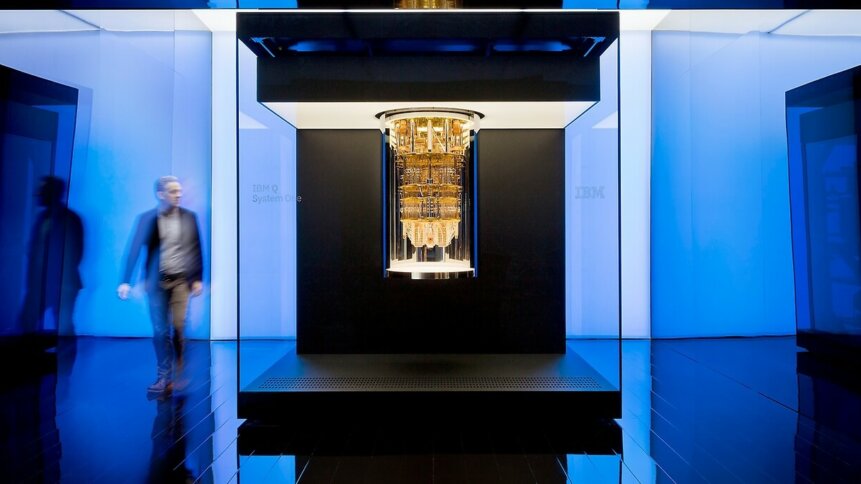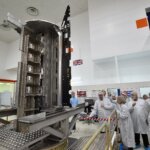Where does EU stand in the quantum computing race with China and US?

- As part of the EU Flagship Quantum Technologies, a prototype for a compact quantum computer was built in October 2021
- The prototype offers a competitive European alternative to the big tech players like Google, IBM, or Alibaba
- University of Innsbruck researchers that conceived the quantum computer are exploring how to power it using solar panels
The leading contenders in the race to qubits (the basic measuring unit in quantum computing) superiority have always been dominated by the US and China. The competition between the superpowers has been ramping up as the quantum research arena has flourished in recent years despite still being a pretty nascent technology. But while the efforts in both the far east and west draw headlines, an often-overlooked region in the quantum conversation has been Europe.
After all, the Europeans have had to catch up with initiatives in the US and China, or risk being left behind in the quantum computing maturity race altogether. With so many research and development breakthroughs emerging, there is a global race underway to be the first to create and conquer the market surrounding this key future tech. The US for instance is investing in excess of US$1.2 billion in quantum R&D between 2019 and 2028, and China is building a US$10 billion National Laboratory for Quantum Information Sciences.
To kick-start a continent-wide quantum-driven industry and accelerate market take-up, Europe launched the Quantum Flagship back in 2018, an ambitious €1 billion, 10-year endeavor. According to the European Commission, the Quantum Technologies Flagship is a long-term research and innovation initiative that aims to put Europe at the forefront of the second quantum revolution.
What has been achieved so far by Europe?
In May 2021, the German government announced that it would spend billions of euros to support the development of the country’s first quantum computer. The aim is to build a competitive quantum computer in just five years, while nurturing a network of companies to develop applications.
Just one month later, it was announced that researchers at the Institute for Experimental Physics of the University of Innsbruck, Austria, have built a prototype for a compact quantum computer. In essence, the quantum computer aims to fit quantum computing experiments into the smallest space possible.
“It is European born-and-bred. It is built with European parts and has demonstrated a world-class ability to entangle 24 qubits – a necessary condition for genuine quantum computations,” an article by the European Commission reads, adding that it is made for the benefit of European industry and academia.
The quantum computer is available online to interested parties, from individual to corporate users, via AQT Cloud Access. With that, it offers a competitive European alternative to the traditional big tech giants such as Google, IBM, or China’s Alibaba. “It also represents a great step forward in ensuring Europe’s technological sovereignty and reducing our dependence on foreign technology computing,” the commission said.
A notable feature of the compact quantum computer is its low power consumption, which stands at 1.5 kilowatts – the same amount of energy needed to power a kettle. “Indeed, such is its low power consumption, that the researchers in the University of Innsbruck are exploring how to power the device using solar panels.”
Another decisive factor for the industrial use of quantum computers is the number of available qubits. The Innsbruck physicists were able to run the quantum computer with 24 fully functional qubits – individually controlling and entangling 24 trapped ions with their device – meeting a recent target set by the German government with surprising speed.
The University wants to be able to provide a device with up to 50 individually controllable quantum bits by next year, as per its press release. To recall, in 2019, Google engineers published a paper stating that they had achieved “quantum supremacy” with a quantum computer with 54 qubits.
The following year, a team from the University of Science and Technology (USTC) in China managed to build the “Zuchongzhi”, which is capable of surpassing Google’s best efforts by a mind-boggling factor of 10 billion. Then again this year, physicists in China claimed that they’ve come up with two quantum computers that have the sheer computing capability to surpass virtually any other system in the world.
Published in the journal Physical Review Letters and Science Bulletin, physicists named their superconducting machine “Zuchongzhi 2”. The Zuchongzhi 2 is an upgrade from an earlier machine released in July 2021 that can run a calculation task one million times more complex than Google’s Sycamore, according to lead researcher Pan Jianwei. At this point, China seemingly took pole position in the unofficial quantum computing race.
Elsewhere in Europe, France and the Netherlands signed a memorandum of understanding in August this year to intensify synergies for the research and development of quantum technologies, joining the race in building high-performance supercomputers, according to EURACTIV France.
The agreement between both nations would mean more collaboration in research, greater cooperation among large tech companies, investments to develop the ecosystem, the acceleration of existing European initiatives, and the creation of jobs in the field. So it is safe to say that Europe may have had a slow start, but is coming on strong from behind and is definitely not one to be taken lightly.










